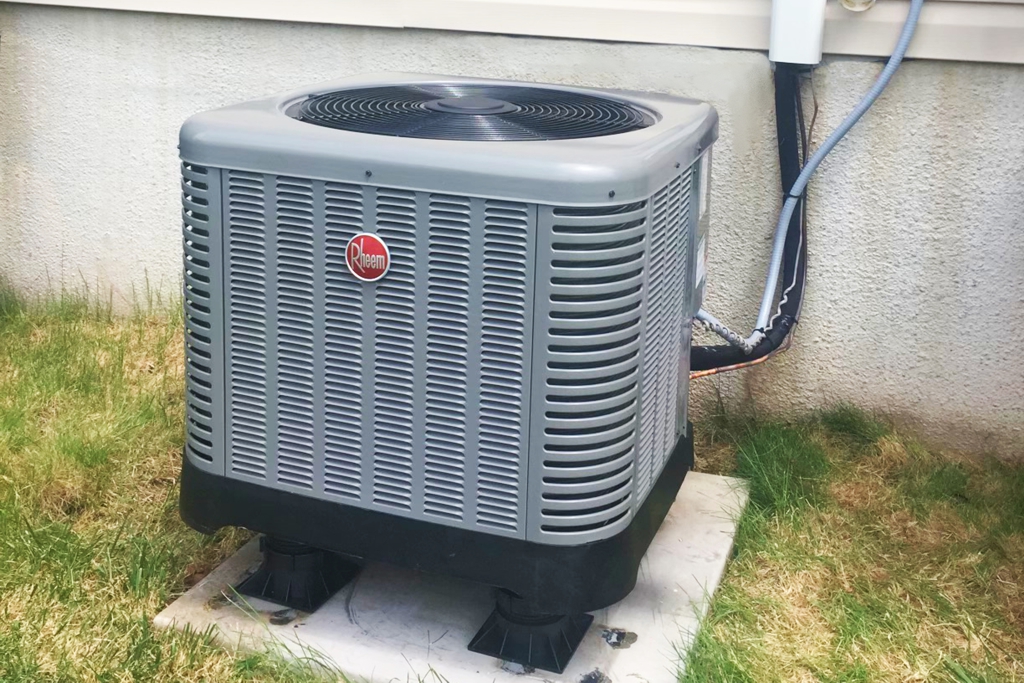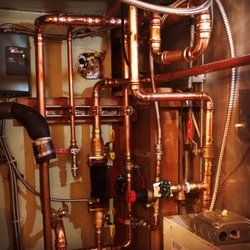Keeping Cool in the Heat: Top Air Conditioning Strategies
Reviewing Your Room: Secret Measurements for Air Conditioning Installation ==========================================================================
If you have actually ever before discovered yourself in an area where the a/c just couldn't appear to keep up with the summer season warmth, you may gain from reviewing your room.
Guaranteeing your cooling system is effectively sized and set up needs interest to crucial dimensions such as room size, window and door dimensions, ceiling elevation, insulation top quality, and airflow patterns. By recognizing these elements, you can optimize your air conditioning system's efficiency and performance.
However just how specifically do these measurements effect your cooling installation?
Trick Takeaways
- Precisely gauge room dimensions for proper unit capacity and air flow optimization.
- Pick energy-efficient doors and windows to boost insulation and lower warmth transfer.
- Make certain ideal air vent positioning and unobstructed air flow for efficient cooling circulation.
- Update insulation to enhance thermal resistance, seal gaps, and boost overall system efficiency.
Space Dimension Dimensions
When gauging space size for a/c installation, ensure you properly assess the dimensions to figure out the appropriate system capacity. Beginning by thinking about furniture placement within the area. Furnishings can block air blood circulation if positioned as well near to vents or the air conditioning device. To assure optimal cooling efficiency, organize your furnishings in such a way that promotes proper air movement throughout the area.
In addition, take into consideration the area's design and dimension when planning for air flow. Proper air blood circulation is essential for maintaining a consistent temperature throughout the room. Bear in mind any type of challenges that could interfere with the circulation of air, such as curtains obstructing vents or large pieces of furniture obstructing air movement. By assuring adequate area for air to flow freely, you can make the most of the performance of your a/c device and develop a comfortable setting in your house.
Doors And Window Capacities
To ensure proper cooling installment, examine the dimensions of windows and doors in the area to optimize air flow and cooling efficiency. When assessing window and door measurements, consider the following:
Framework Compatibility: See to it that the air conditioning unit you pick works with the structures of your doors and windows. Energy-efficient AC repair Inappropriate fit can cause air leakages and decreased energy efficiency.
Installation: Consider the installment process when choosing an a/c system. Some systems may require specific home window dimensions or added adjustments for appropriate installment.
Product Selection: Choose windows and doors made from products that provide great insulation to enhance power effectiveness. Correctly protected windows and doors can aid keep a consistent temperature level in the room.
Power Effectiveness: Opt for energy-efficient windows and doors to reduce warm transfer and improve the total performance of your cooling system. Energy-efficient products can enhance the cooling capacities of your room while decreasing energy costs.
Ceiling Elevation Evaluation
Examining the height of your ceiling is vital for figuring out the very best positioning of air conditioning vents for efficient cooling distribution. When assessing your ceiling height, make sure to take into consideration the clearance required for both the ductwork and the air conditioning vents. Sufficient ceiling clearance assurances that the ductwork can be set up effectively with no obstructions, allowing for suitable airflow throughout the space.
In addition, proper clearance above the vents guarantees that the cooled down air can flow freely with no limitations, bring about even more also cooling down in the room. Latest air conditioning technology
When planning the positioning of ductwork, think about the height of your ceiling to stay clear of any type of problems with setup or efficiency. Correctly positioned ductwork can help make best use of the effectiveness of your a/c system and make certain that each area receives enough cooling.
Insulation Evaluation
Evaluate the insulation top quality to maximize the performance of your cooling system. Appropriate insulation plays an important function in preserving a comfortable interior environment while making the most of energy efficiency. Below are four bottom lines to examine when reviewing the insulation in your space:
Thermal Resistance: Inspect the R-value of your existing insulation to make certain it fulfills the recommended standards for your region. Higher thermal resistance suggests better insulation quality, which assists in minimizing warm transfer and preserving a constant temperature.
Insulation Placement: Inspect the placement of insulation throughout your space, focusing on locations such as wall surfaces, ceilings, and floors. Effectively mounted insulation prevents power wastage by decreasing warm exchange with the surrounding setting.
Securing Voids: Identify and seal any spaces or splits in the insulation to avoid air leak. Appropriately secured insulation enhances power performance by maintaining airtight obstacles that prevent conditioned air from running away.
Updating Insulation: Consider upgrading your insulation to more recent, a lot more energy-efficient products. Upgrading can boost thermal resistance, reduce power intake, and boost the total performance of your cooling system.

Air flow Evaluation

Evaluating the air movement within your room is very important for ensuring peak efficiency of your air conditioning system. Correct air flow circulation is necessary to preserve regular temperature levels throughout the area. When examining air flow, think about the air flow needs of each room to ensure sufficient air circulation.
To examine airflow distribution, beginning by looking for any obstructions such as furniture obstructing vents or debris clogging air ducts. Poor air flow can bring about ineffective air conditioning and home heating, causing discomfort and raised energy expenses. It is necessary to attend to any type of concerns without delay to maximize the performance of your cooling system.
Furthermore, comprehending the air flow needs of various rooms in your home or office is crucial to maintaining air high quality and convenience levels. Appropriate ventilation helps remove stagnant air, odors, and contaminants while bringing in fresh outside air. By examining air flow and ventilation needs, you can produce a more comfy and healthy and balanced indoor atmosphere for every person.
Frequently Asked Inquiries
How Can I Identify the most effective Area for My Air Conditioning Device Within the Area?
When determining the very best place for your AC unit in a space, take into consideration the air conditioning ability and air flow. Maintain the system far from obstacles that can obstruct airflow and location it centrally in the room to ensure even cooling.
Perfect placement aids distribute cool air efficiently, making the most of the system's efficiency. Correct positioning can make a considerable distinction in exactly how properly your ac system cools the space.
Exist Any Kind Of Particular Factors to Consider When Setting Up a Cooling Unit in a Multi-Level Building?
When mounting a cooling device in a multi-level structure, take into consideration factors like power efficiency, cooling ability, positioning, and accessibility.
See to it the unit is strategically placed to cool multiple degrees successfully. Choose an area that allows simple access for repair and maintenance.
Additionally, assess the air conditioning capability to ensure it can properly cool the entire building. These factors to consider will certainly aid enhance the efficiency of your cooling system in a multi-level setup.
What Is the Ideal Range Between the A/c Unit and Any Type Of Heat-Producing Home Appliances in the Area?
When putting your cooling system, make sure appropriate air flow distance from heat-producing home appliances in the area. This assists with heat dispersion and prevents the AC from functioning tougher to cool down the area.
Go for a suitable range of at the very least 3 feet between the air conditioning device and any kind of warm resources like ovens or lamps. Maintaining this separation will enhance the efficiency of your a/c system and expand its life expectancy.
Exist Any Prospective Hazards That I Should Understand When Setting Up an Air Conditioning Unit in a Tiny or Encased Room?
When installing an air conditioning device in a little or encased space, be mindful of prospective hazards. See to it to deal with air flow worries to avoid air quality concerns. Take safety preventative measures seriously, specifically with restricted space restraints.
Be aware of installment obstacles like appropriate placement for best efficiency. Focus on safety and make certain your room is well-ventilated to stay clear of any risks associated with mounting an air conditioning device in a restricted area.
Just How Can I Guarantee Correct Ventilation for My Air Conditioning Unit to Operate Successfully in a Room With Limited Air Movement?
To enhance airflow for your air conditioning system in a room with restricted air movement, warranty correct air flow by keeping vents clear and unhampered.
On a regular basis tidy or change air filters to maintain effectiveness.
Consider utilizing a fan to help flow air and protect against stagnant pockets.
Setting the system in a location where air can move easily, avoiding confined rooms.
These actions will help your a/c operate effectively and cool the space effectively.
Conclusion
Since you have taken vital dimensions for your a/c setup, you're one step closer to making sure peak air conditioning efficiency in your area.
By properly evaluating space size, window and door measurements, ceiling height, insulation, and air movement, you can make educated decisions on the best AC system for your demands.
Bear in mind, correct measurements are necessary for an effective and reliable a/c setup.